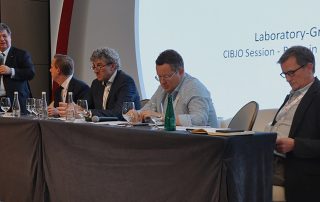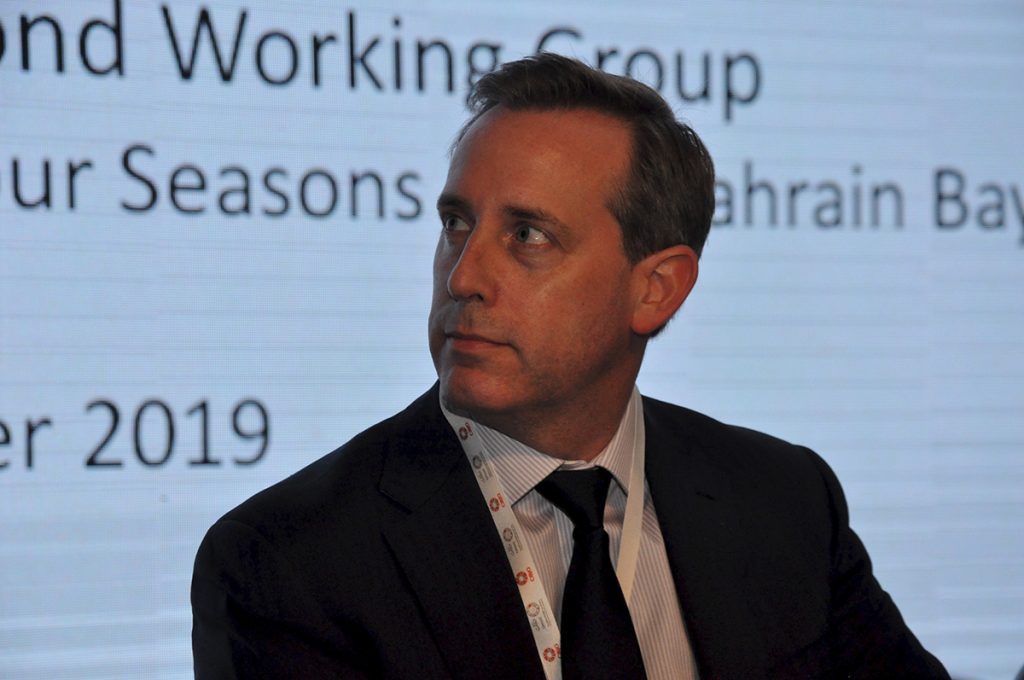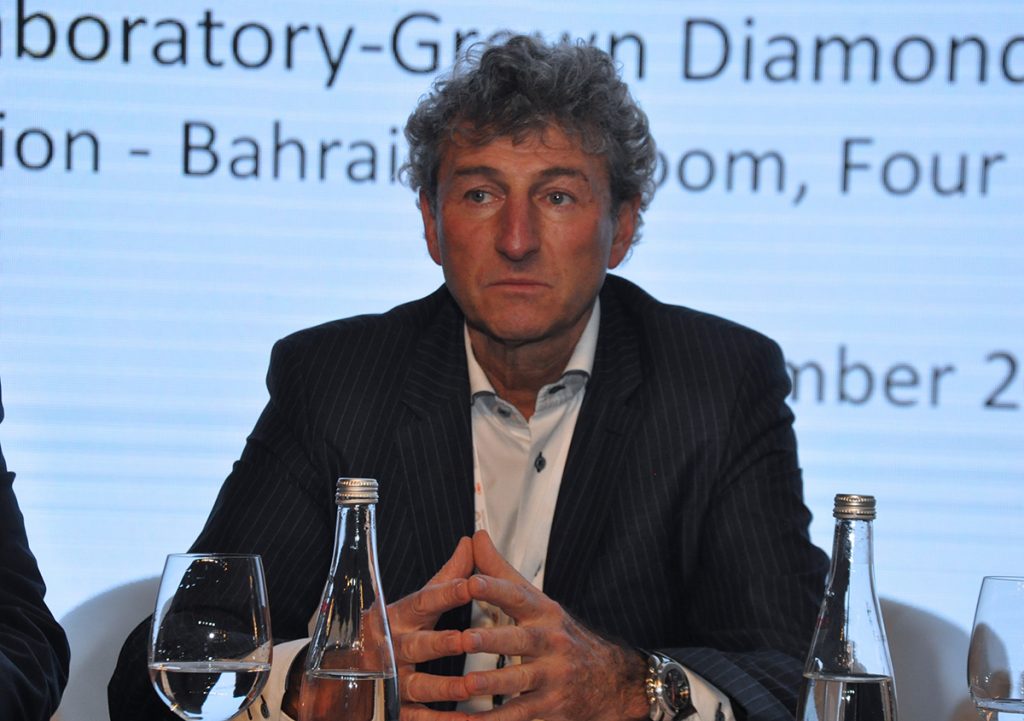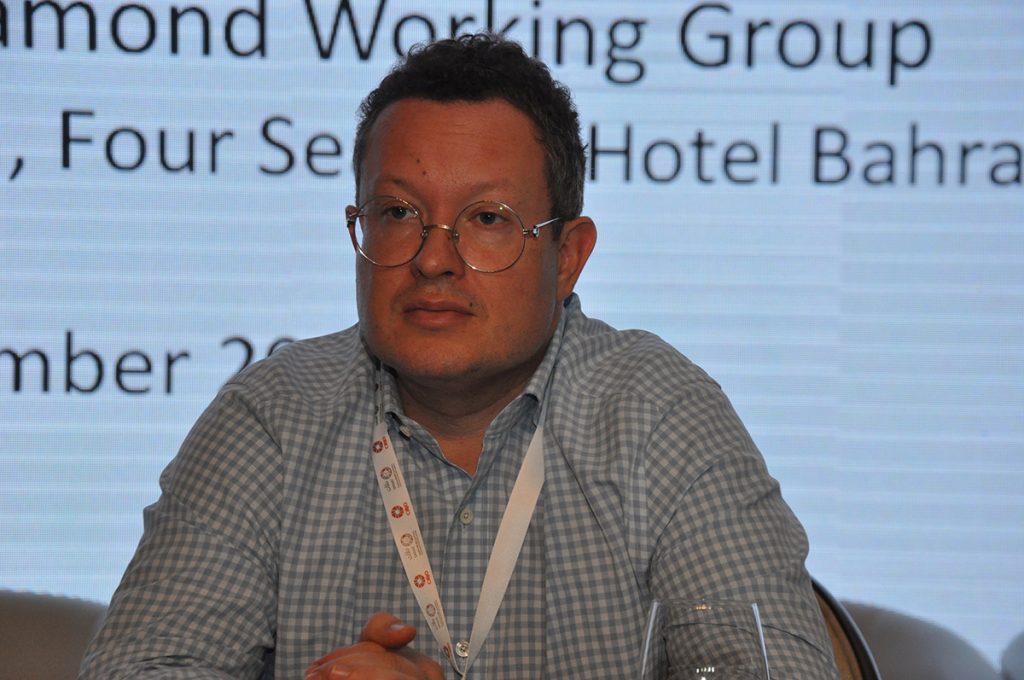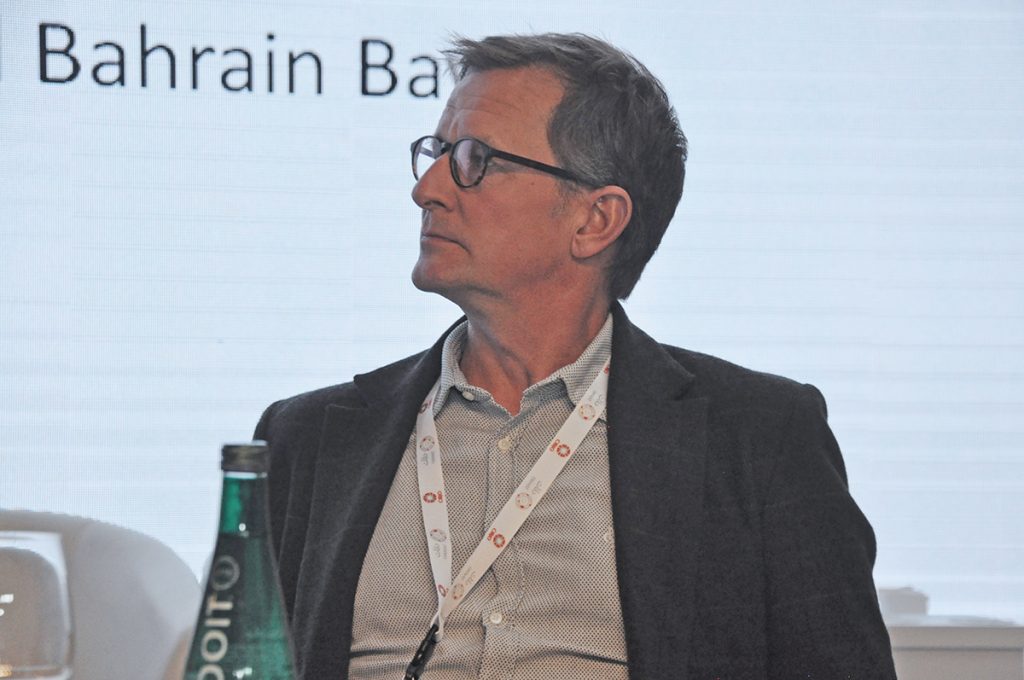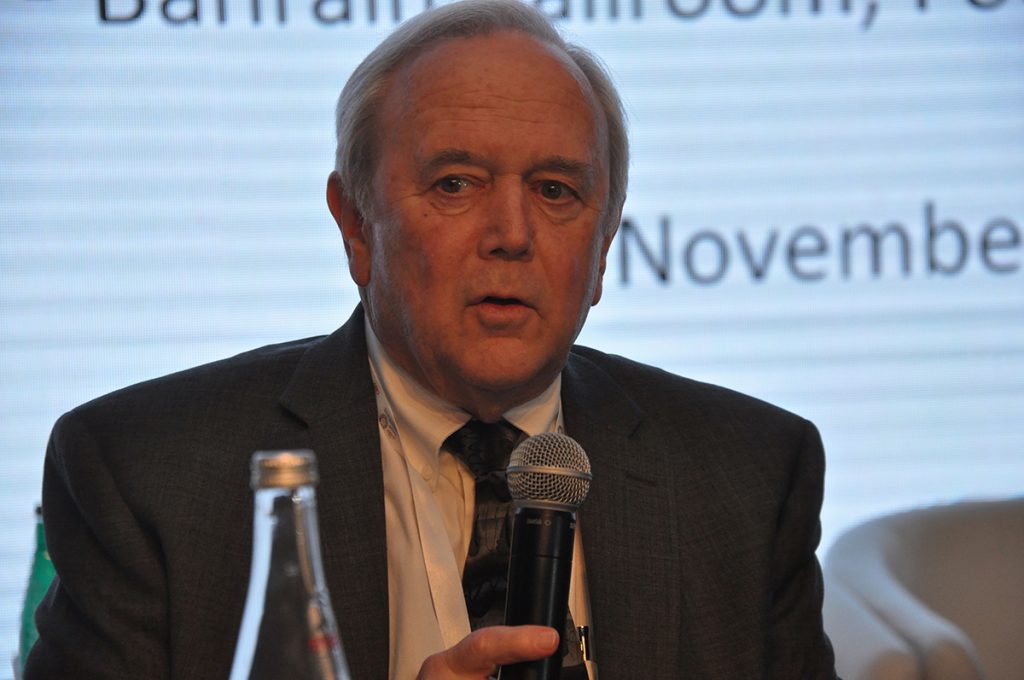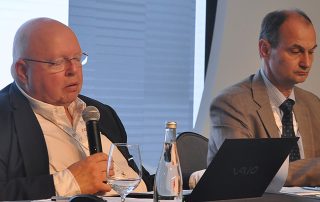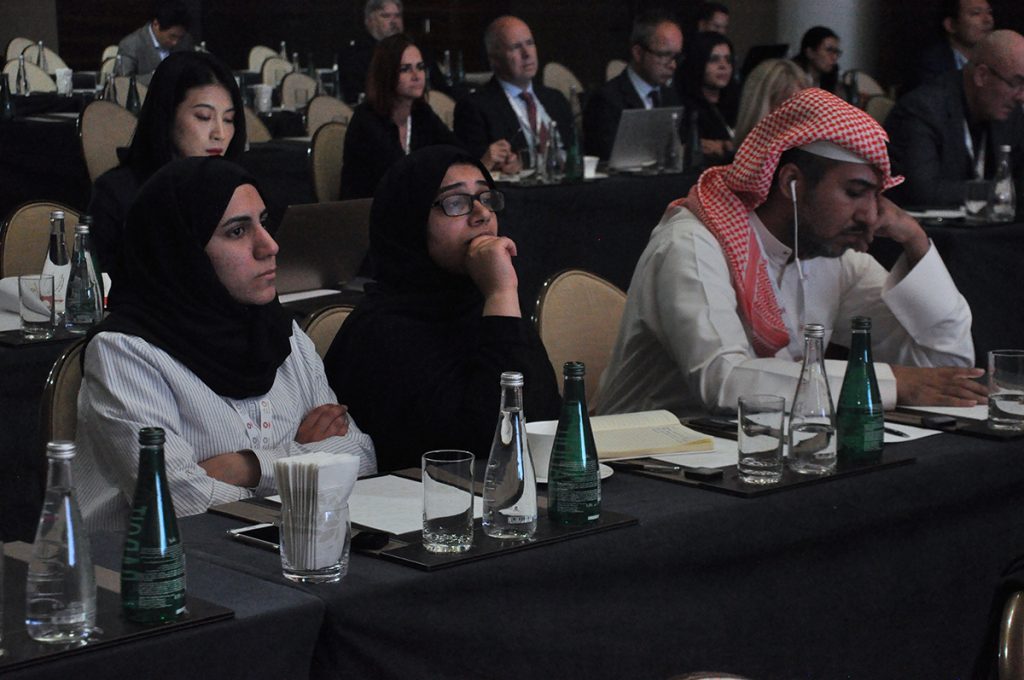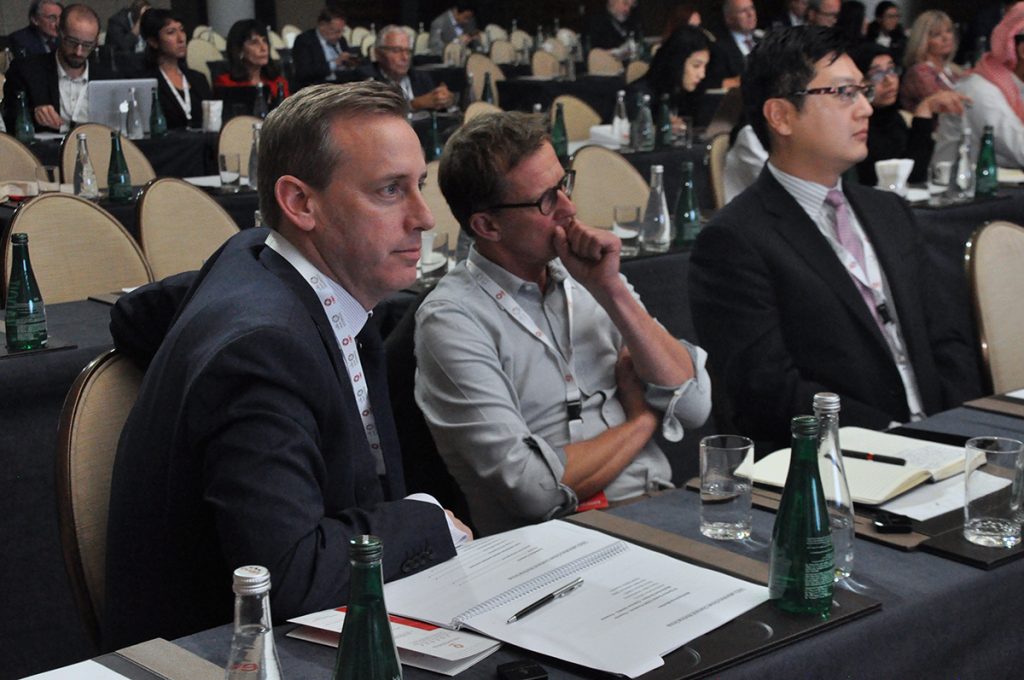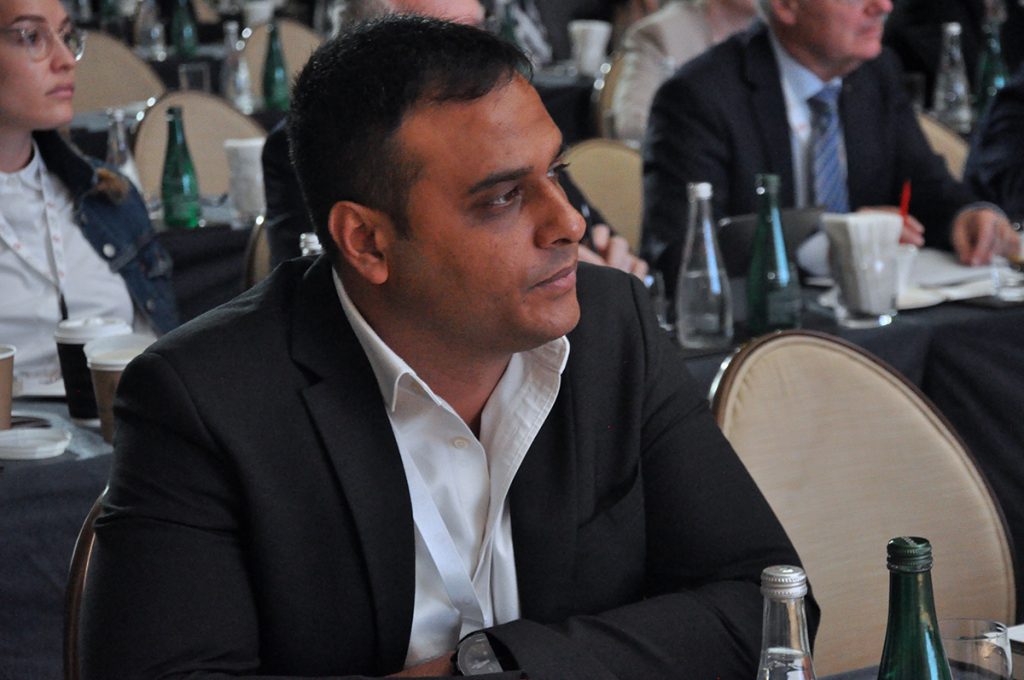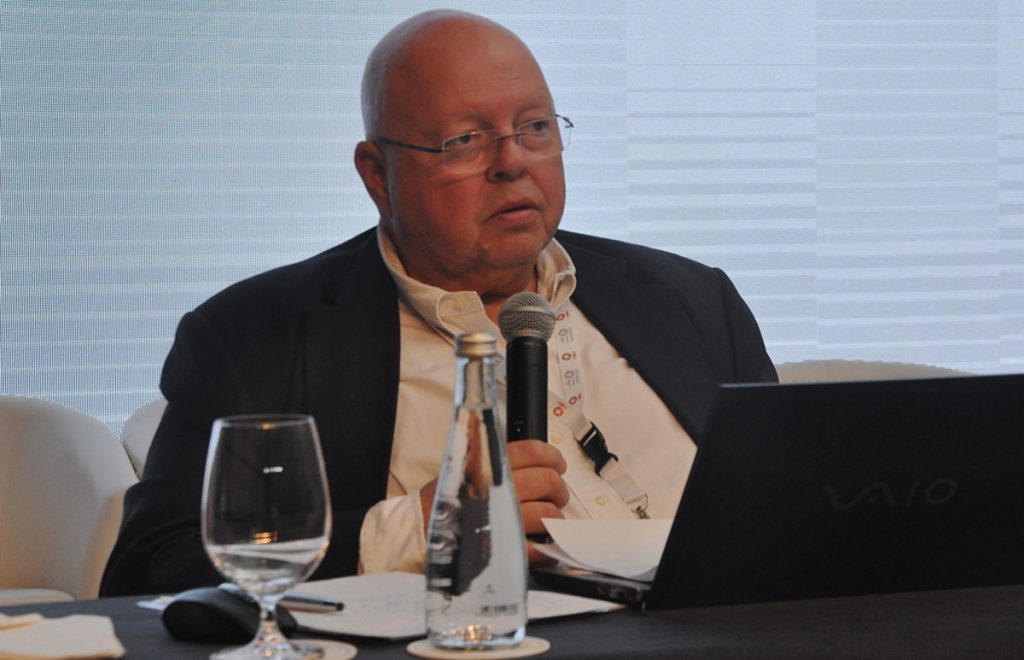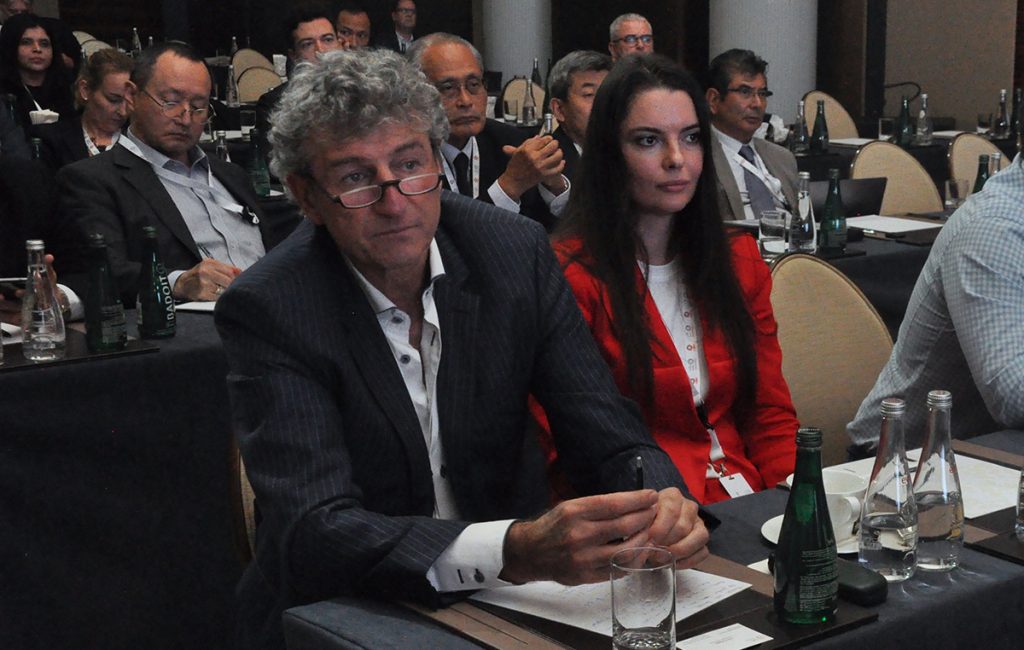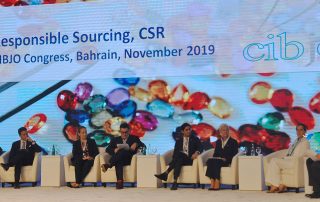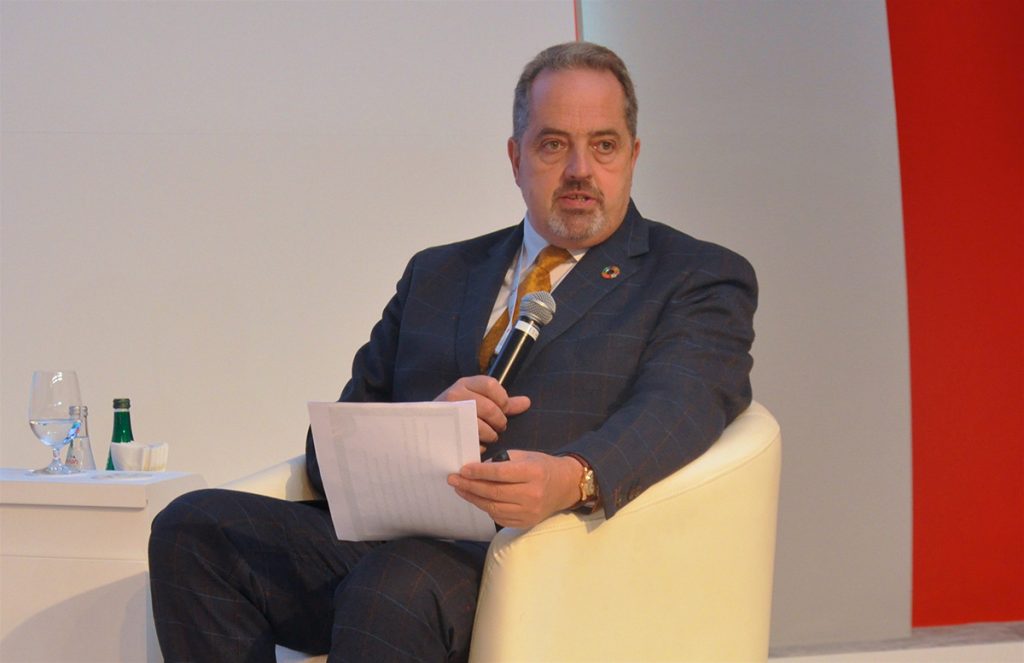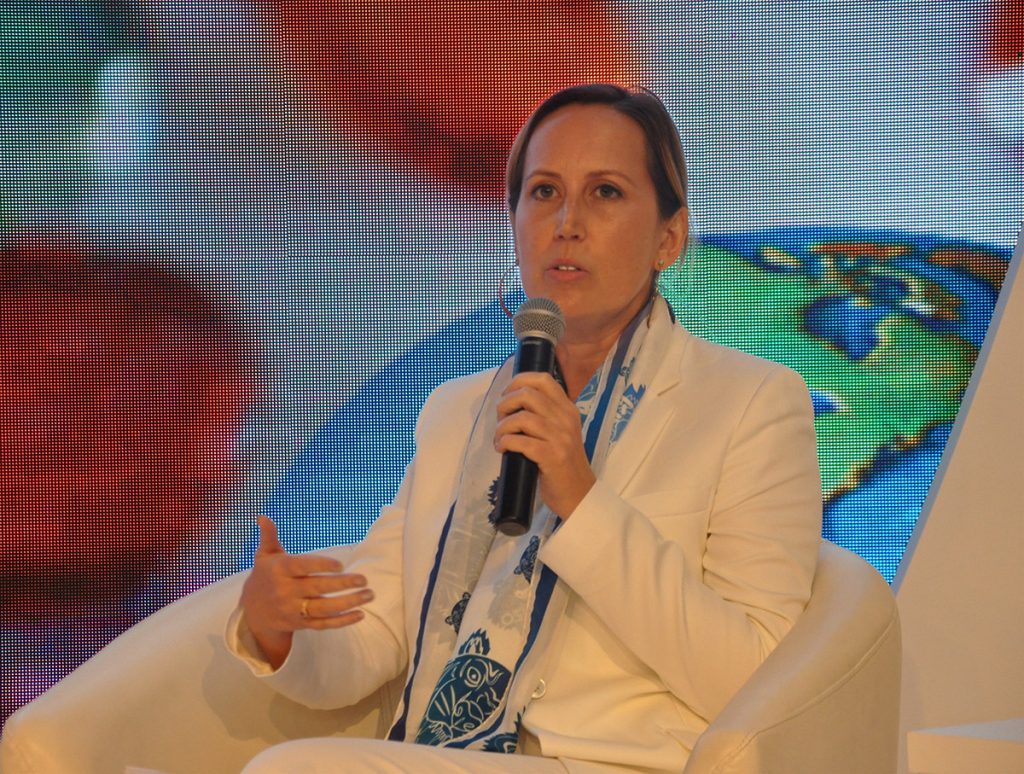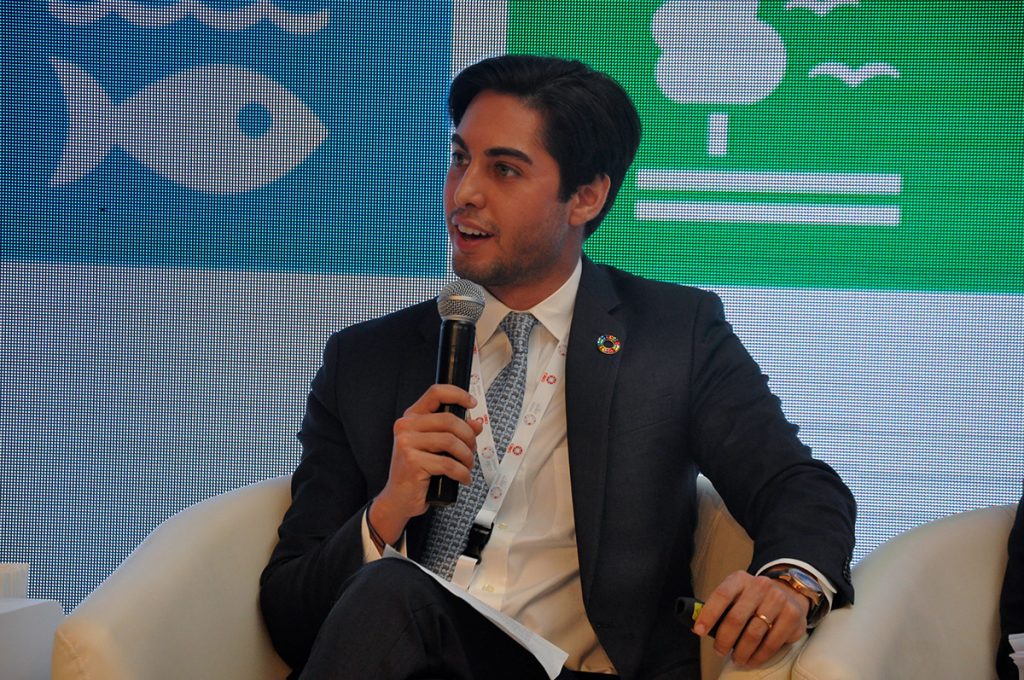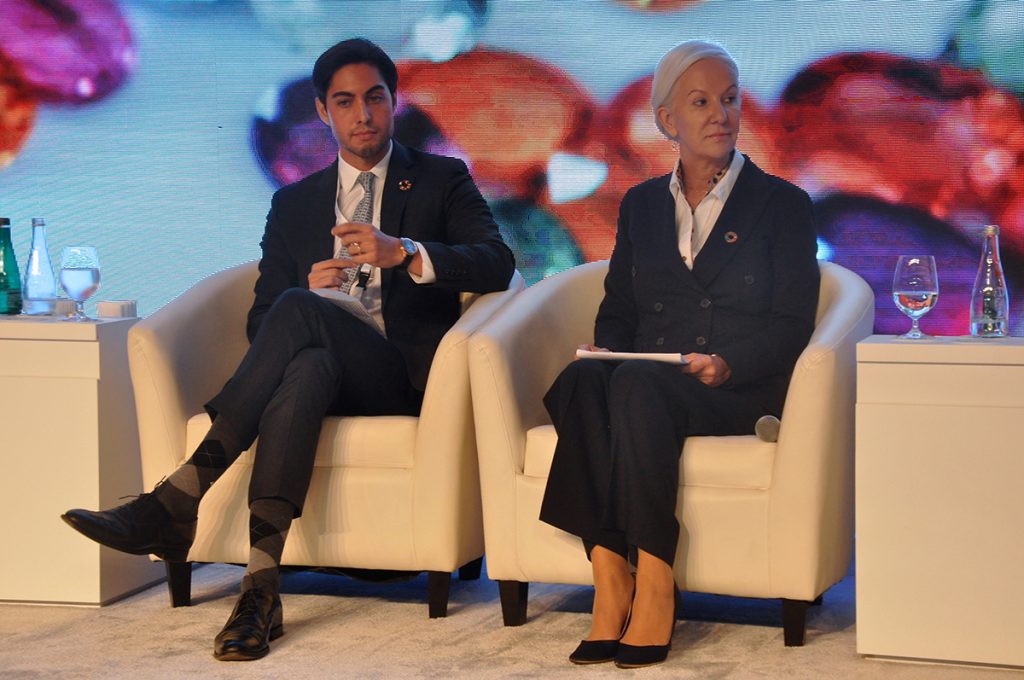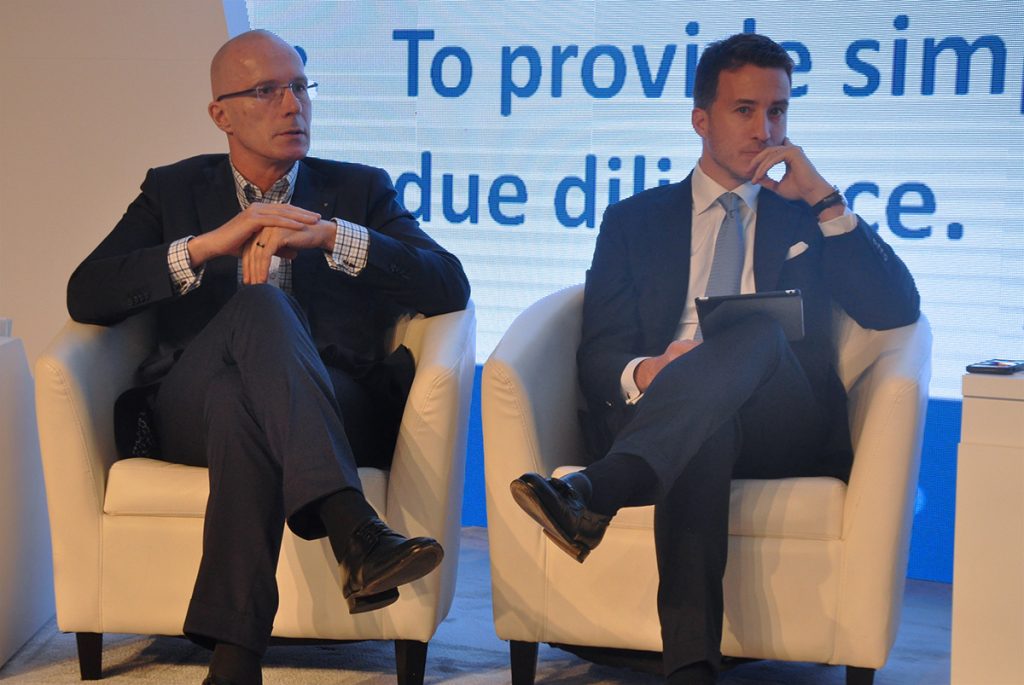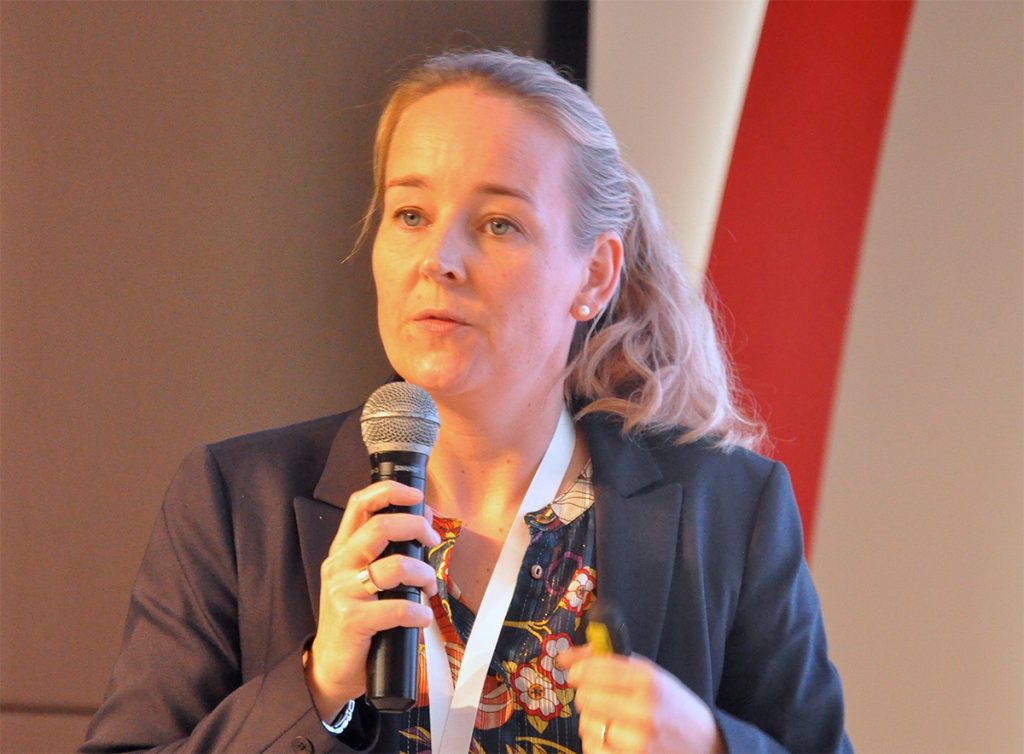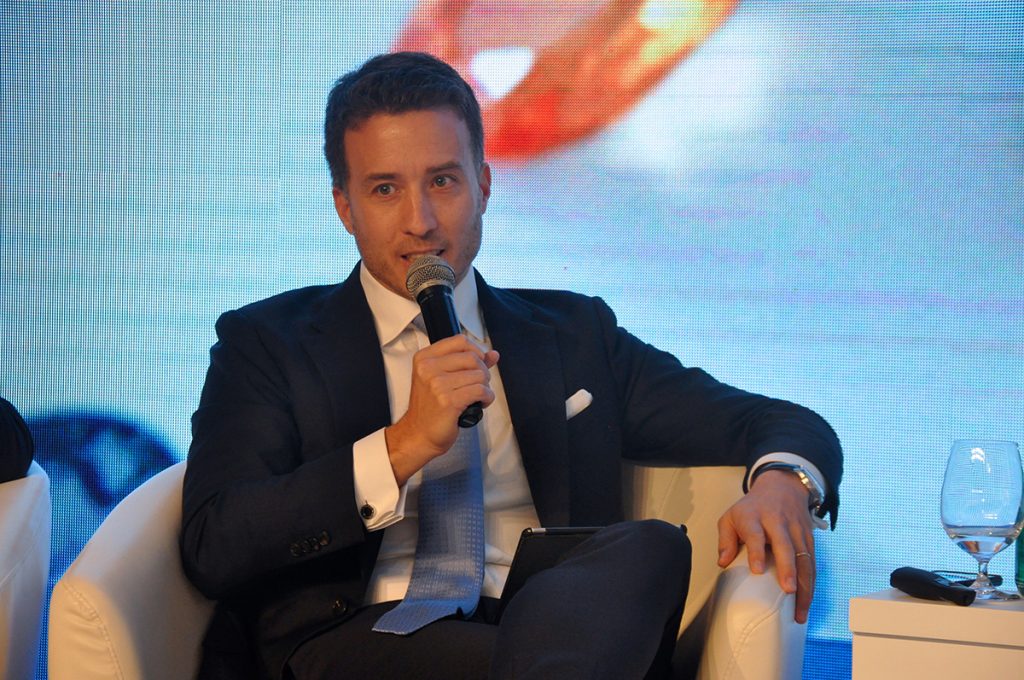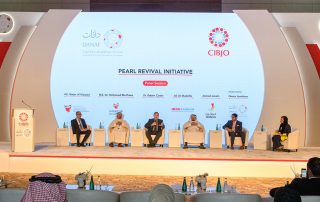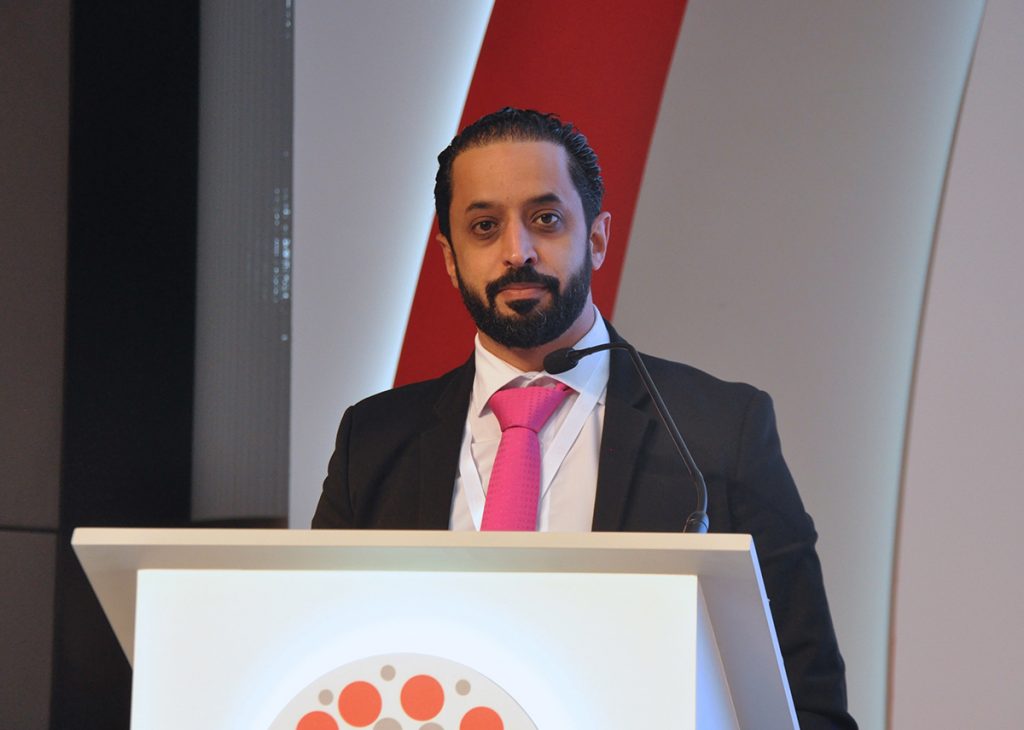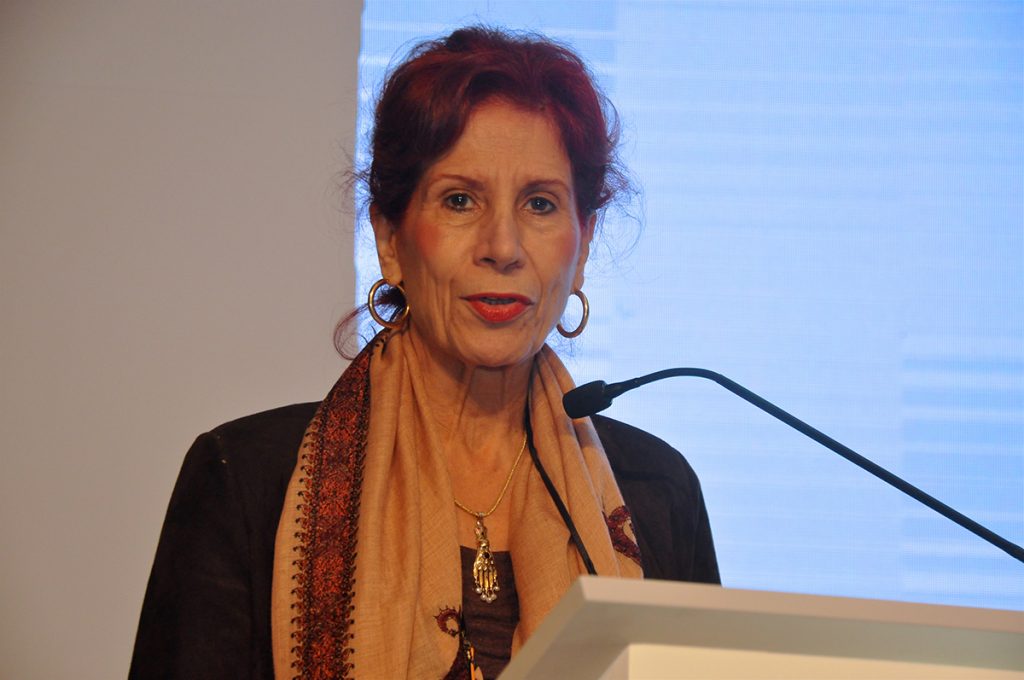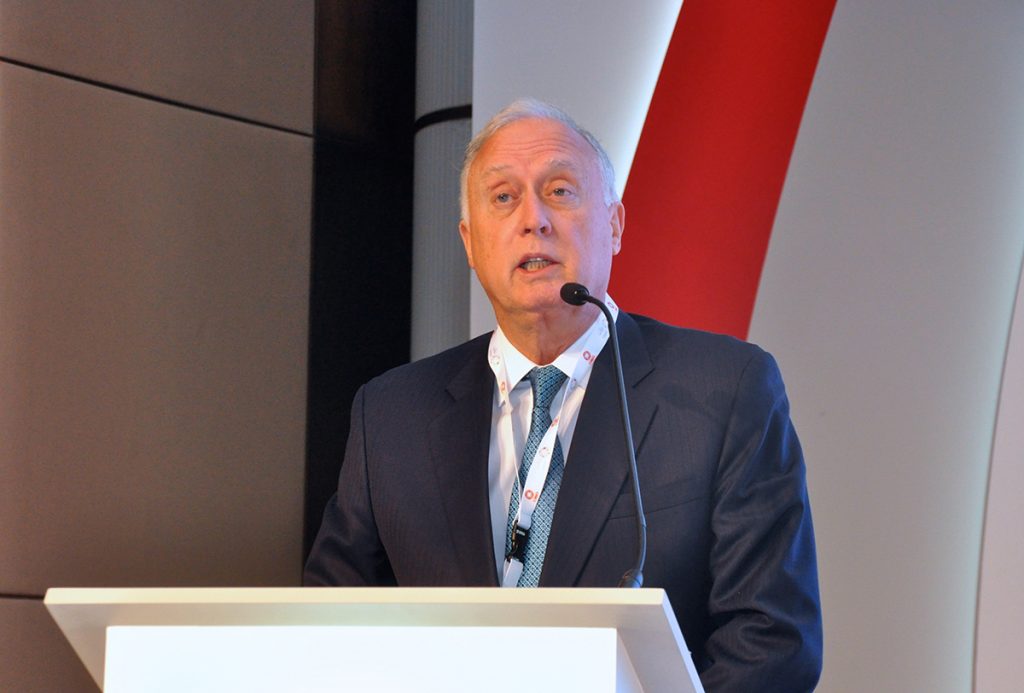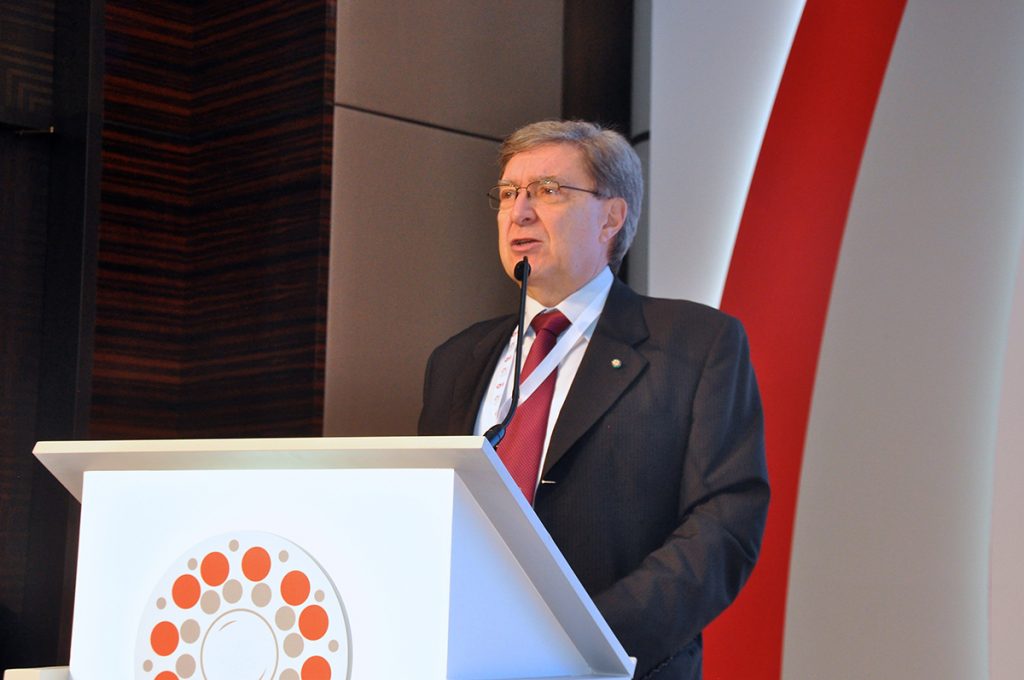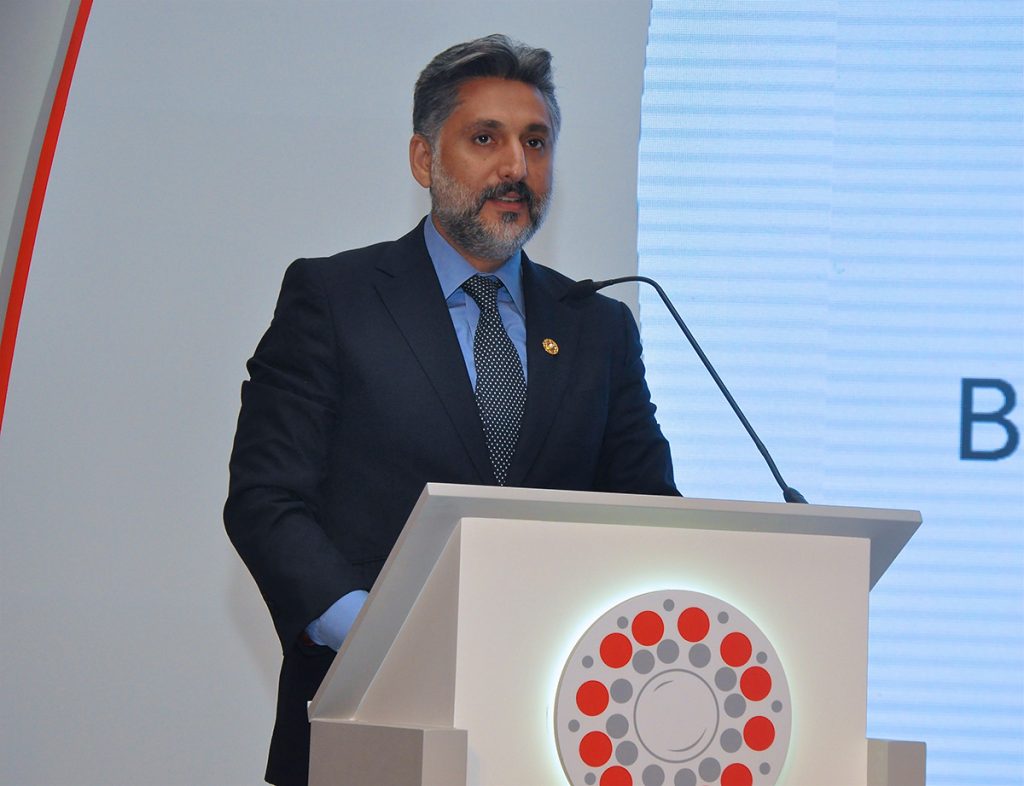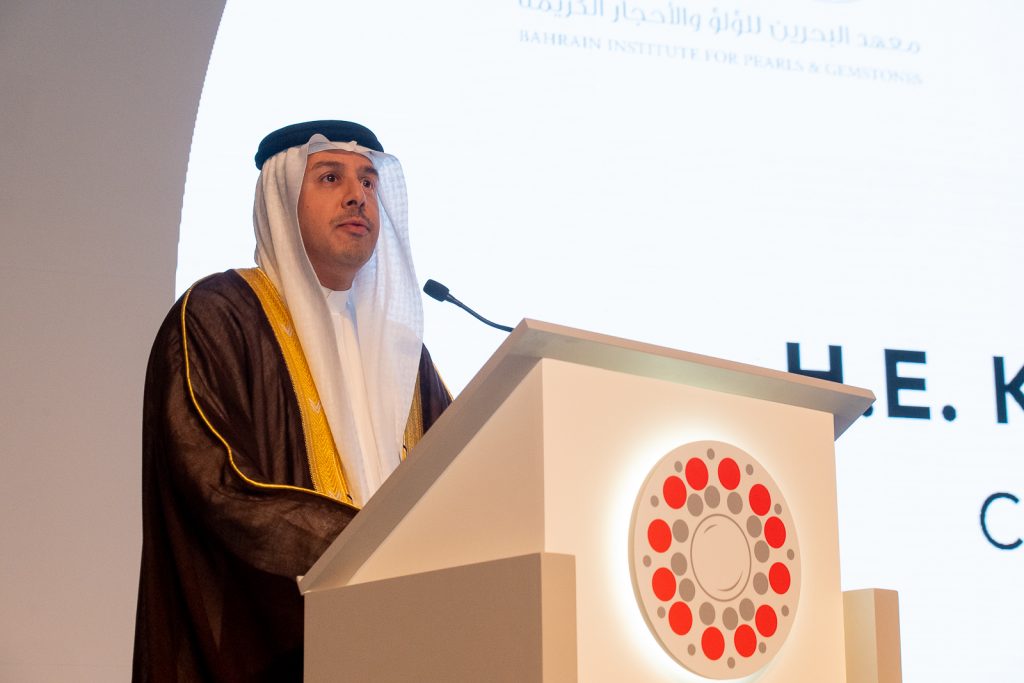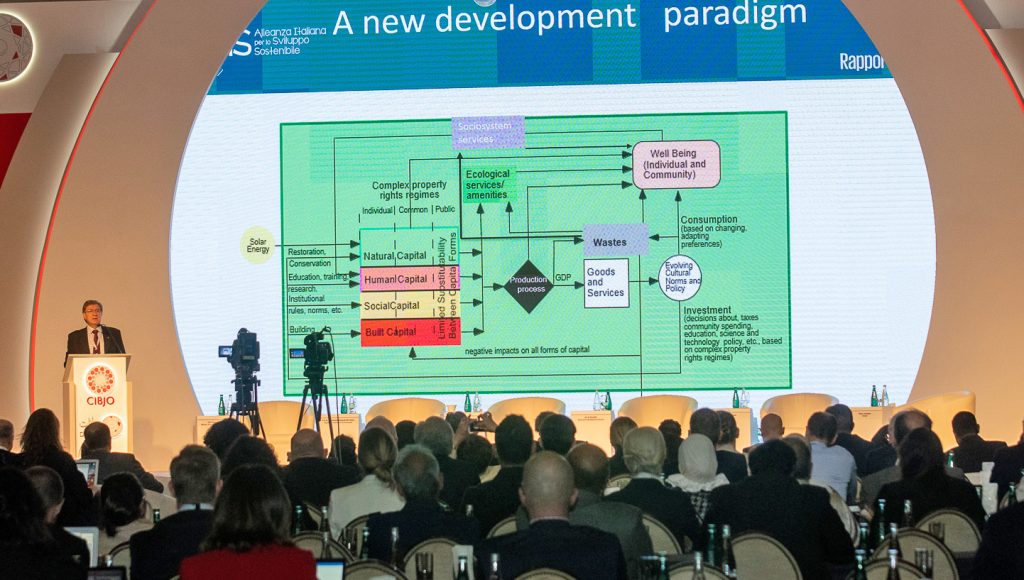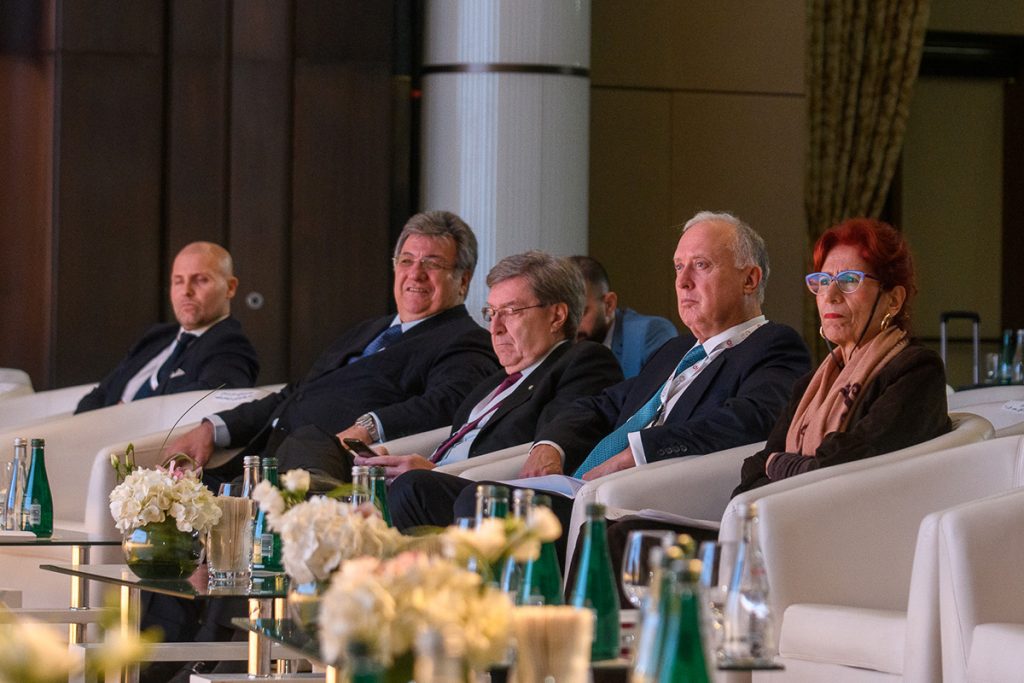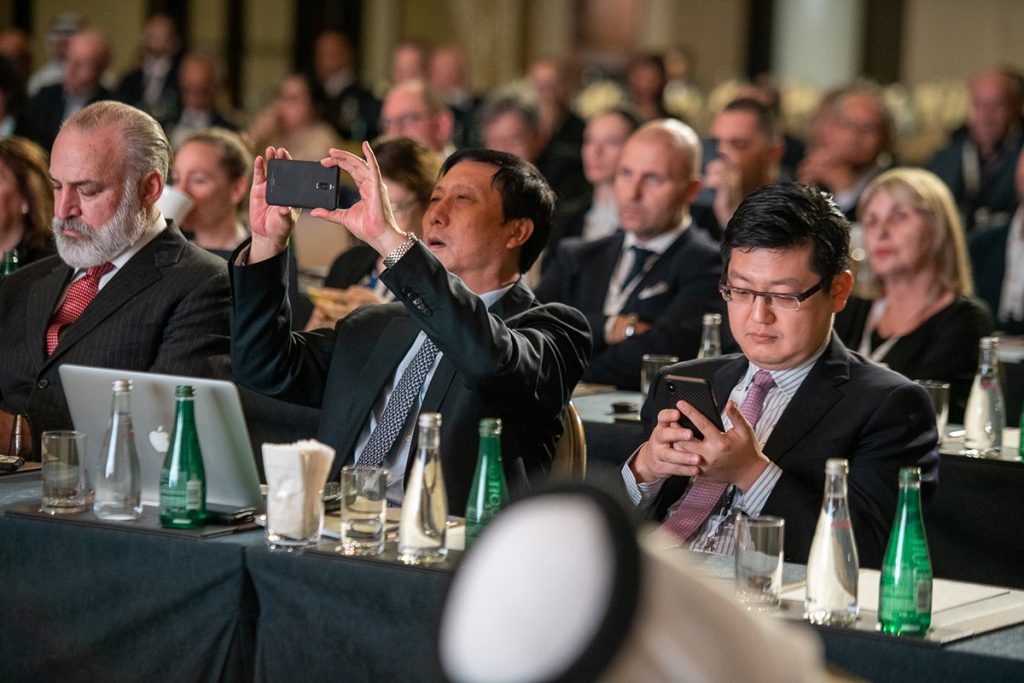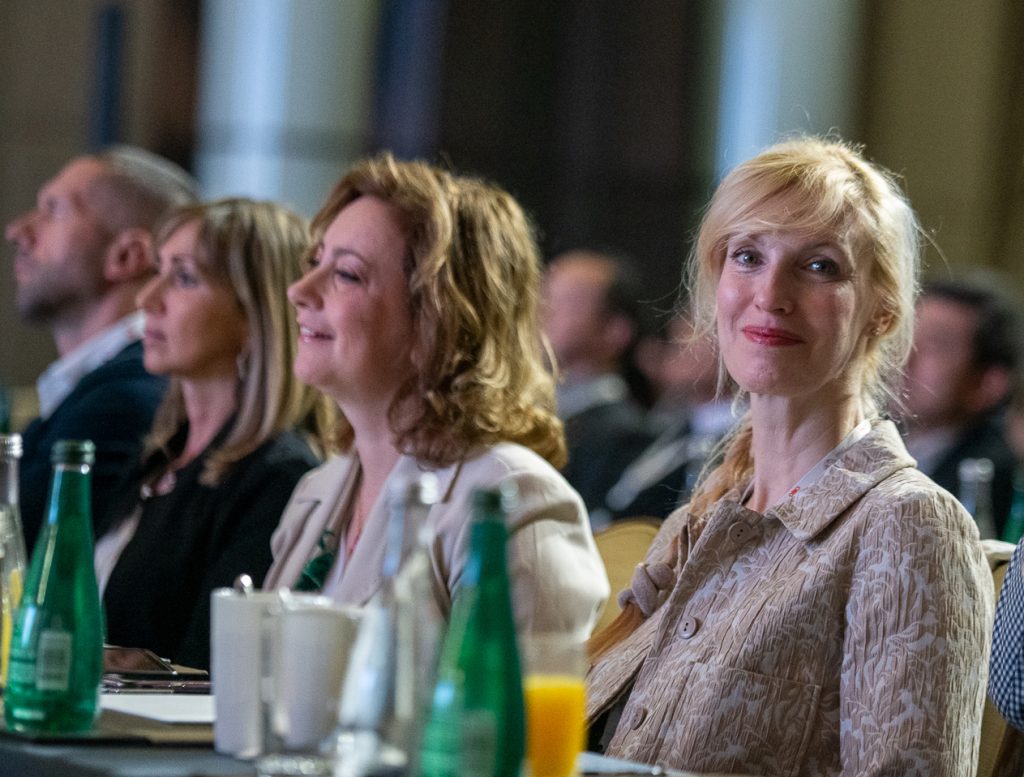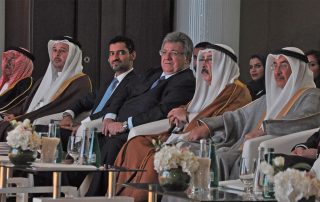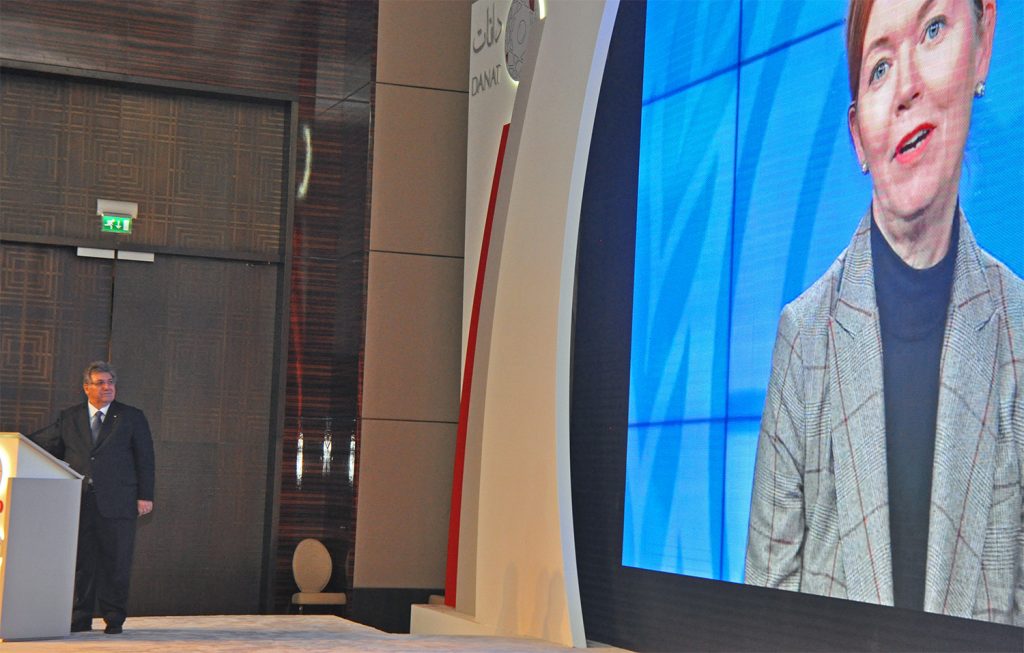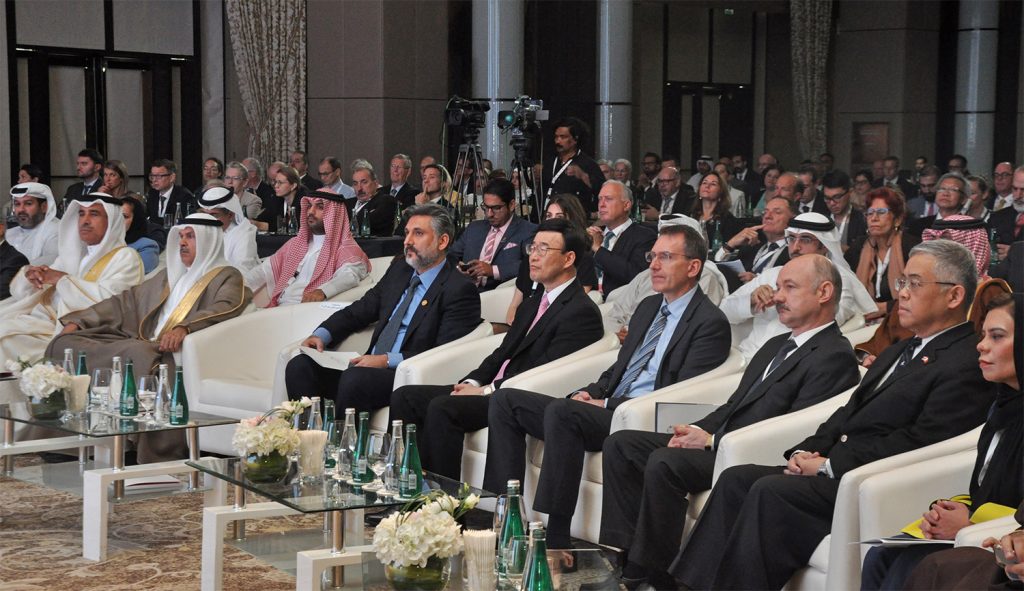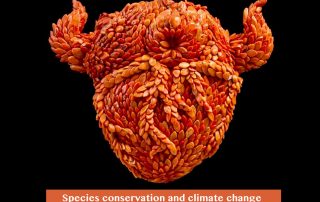Laboratory-Grown Diamond Working Group presents blueprint for set of working principles for new industry sector
ABOVE: CIBJO President Gaetano Cavalieri addressing the Laboratory-Grown Diamond Working Group. On the podium (from left) are Wesley Hunt, Chairman, Thierry Silber, Andrey Zharkov and Daniel Nyfeler.
NOVEMBER 19, 2019
There was intense interest in the first meeting of the Laboratory-Grown Diamond Working Group headed by Wesley Hunt of the De Beers Group. He said the new body was “about us working together with differentiated products that consumers can understand.”
He emphasized that the document the group presented was purely a draft for full and complete consultation by CIBJO members. The goal of the session was to introduce draft Laboratory-Grown Diamond Guidelines and ratify next steps to setting up a commission and a possible Blue Book for clear product differentiation.
“There are clear ground rules,” Mr. Hunt explained: “The primary goal of the Laboratory-Grown Diamond Working Group (LGDWG) is to protect consumer confidence. Secondly, to ensure consumer confidence that the consumer must receive complete and unambiguous information about what they are buying (i.e. a natural diamond or a laboratory-grown diamond), so that they can make a consciously informed purchasing decision. And, thirdly, such principles should be carried out with mutual consideration by all sides, so as not to harm the natural or laboratory-grown diamond sectors in marketing their respective products.”
In addition to Mr. Hunt, the working group included Gaetano Cavalieri, CIBJO President; Thierry Silber, Madestone; Andrey Zharkov, Ultra C; Jean-Marc Lieberherr, Diamond Producers Assocation (DPA); and Daniel Nyfeler, Gübelin Gem Lab. Steven Benson, CIBJO’s Communications Director, provided support.
The group held regular conference calls over a 10-month period, and it met face-to-face twice in Milan on two occasions. Over this period the draft document was created.
In a document prepared by the group they wrote: “A stated goal of the working group is to create a framework by which the laboratory grown diamond industry would become recognized as a bona fide sector within CIBJO and the greater jewellery industry, while at the same time protecting the interests of the other sectors of the industry. The working group would include CIBJO officers and officials, representatives both the laboratory grown diamond sector and the natural diamond sector, and gemmological laboratories .
“Pending approval by the CIBJO Board of Directors, it is intended that the Laboratory Grown Diamond Working Group become recognized as a fully fledged Laboratory Grown Diamond Commission, and then within a year of its approval that the guideline document may be ratified as the Laboratory Grown Diamond Book.”
CIBJO President Gaetano Cavalieri told the packed meeting that the group had produced a document that will be discussed and amended. “It’s important that we have something on the table that we need to discuss. We have to work together closely. It’s kind of a white paper and we will all cooperate to reach rules and that is important. Clearly, we need much more work beyond what has been produced so far. Sector A will discuss it and take it to the board of directors. The main aim is to avoid consumer confusion.
“I must stress that there is no fait accompli here. There can never be such a thing under my leadership. This is the first stage in the discussion. Please send all your comments to the Working Group.”
International Grown Diamond Association Secretary-General Dick Garard was invited to speak on the subject. “We think the US Federal Trade Commission guidelines enable both natural and LGD to exist. We hope that a document will be produced that can take this issue forward.”
Meanwhile, World Federation of Diamond Bourses (WFDB) President Ernie Blom raised his concerns regarding the new Laboratory-Grown Diamond Working Group. “I have three concerns: the way that the synthetic manufacturers are running down the diamond industry; the potentially huge problem where unethetical behavior could create problems with consumers who might one day sell an item set with diamonds and find out that they are synthetics; and a new issue where synthetics might be grown around naturals. Does that mean there will be a day when we won’t be able to detect these stones?”

